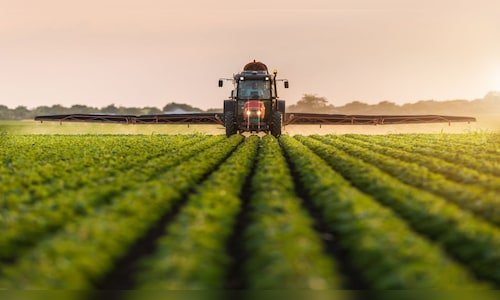As an American delegation visits New Delhi to negotiate the terms of a proposed bilateral trade agreement, the discussion around agricultural trade remains a critical issue.
Ajay Sahai, Director General of the Federation of Indian Export Organisations (FIEO), emphasised the challenges associated with agricultural trade. “Industrial goods do not pose as many challenges as agricultural and dairy products. In India, agriculture is largely for sustenance, not commercial trade. This isn’t trade among equals, and India may not be grant significant concessions on these products. Even if there are concessions, there will likely be quantitative ceilings to limit imports of agricultural goods that could affect local farmers or the general public,” he stated.
While products such as Washington apples, Californian almonds, and pistachios are already available in Indian markets, the US is seeking broader access for its dairy and cereal preparations. Many of these are industrially produced and could directly compete with small Indian farmers if tariffs are significantly reduced.
India has consistently emphasised concerns about food security at global forums. During the WTO Ministerial in Abu Dhabi last year, India advocated for a permanent solution to public stockholding for food, reinforcing its Minimum Support Price (MSP) regime. The country also highlighted disparities in agricultural subsidies, pointing out that some developed nations provide subsidies 200 times higher per capita than developing countries. This stance was backed by 80 countries, collectively representing over 61% of the global population, prioritising livelihoods over export-driven policies.
Indian consumer preferences are evolving, with an increasing appetite for foreign products. Navneet Grover, a shop owner at INA Market, noted, “People start buying foreign products after traveling abroad to replicate the same taste. Foreign products are undoubtedly costlier, but lower duties could improve sales. The demand for imported goods has already increased due to greater variety.”
Despite the contentious agricultural tariff issue, reduced tariffs could benefit India’s exports in other sectors. The Agricultural and Processed Food Products Export Development Authority (APEDA) is actively onboarding exporters and Food Processing Organisations (FPOs) onto the export vertical of the Open Network for Digital Commerce (ONDC). While products under export restrictions, such as rice and onions, remain regulated, India is focusing on exporting 25 edible products, including alcoholic beverages, jaggery, confectionery, bananas, mangoes, pomegranates, grapes, watermelons, green chilies, capsicum, potatoes, okra, natural honey, ghee, and cereal-based items like sweet biscuits, papad, and dried pasta.
India is also striving to boost agricultural export volumes and diversify its export basket by penetrating new markets in Europe and Latin America. India’s market share in these regions remained at a mere 0.35% last year, highlighting significant growth potential.

